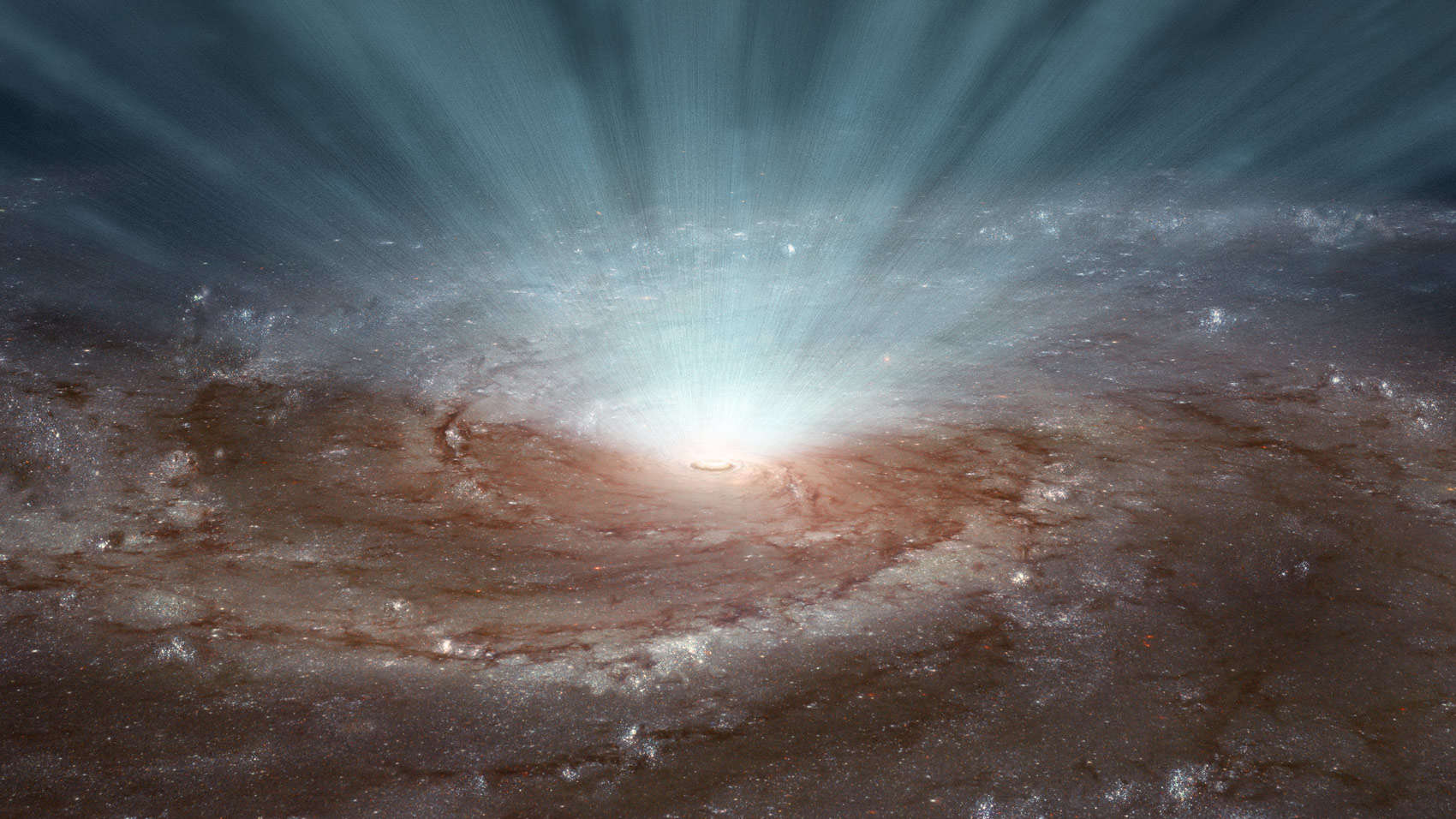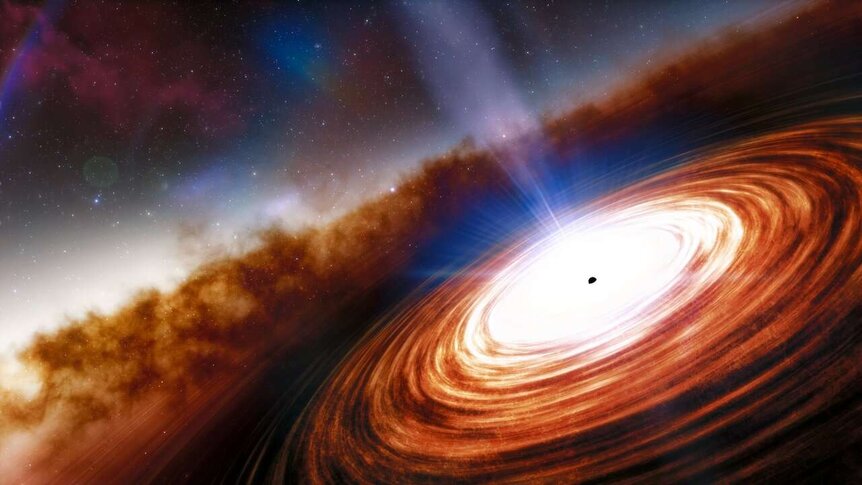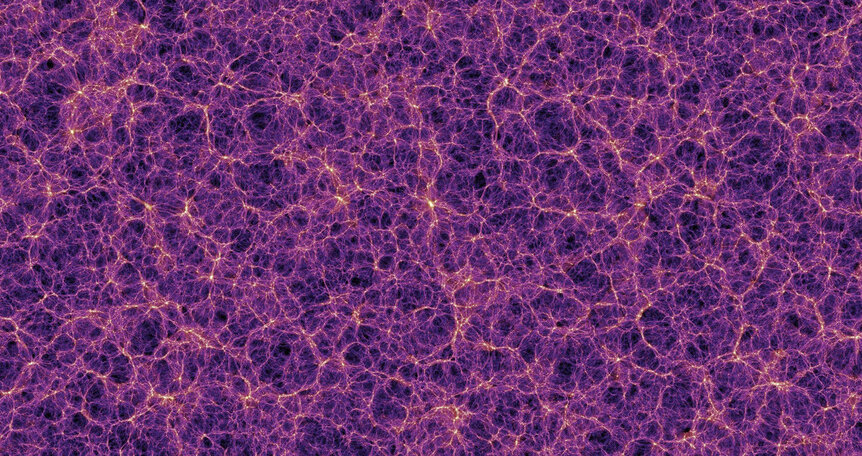Create a free profile to get unlimited access to exclusive videos, sweepstakes, and more!
How did supermassive black holes get so big so fast? To find out, scientists turn to the dark sector
New idea posits supermassive black holes were born that way.

Astronomers have been facing a big problem in cosmology — the study of the formation and behavior of the Universe itself — for a while now. Literally the biggest: Where do the most supermassive black holes come from?
A team of theoretical physicists with Brookhaven National Laboratory have come up with an idea that may solve the problem. And while it’s highly theoretical — involving particles not yet discovered and some other as-yet unobserved suppositions about the Universe — it may solve two big problems at the same time, which is something physicists like.
It also may lead the way to understanding the most massive single objects and the least massive single objects in the Universe.
The problem itself is quite real. We know every big galaxy has a supermassive black hole in its center, with millions and some with billions of times the mass of the Sun. If matter is falling into these monsters, it heats up and glows, and by glow I mean blasting out radiation so fiercely it can outshine entire galaxies and be seen clear across the Universe.
The bigger the black hole the brighter the infalling matter, and we see some galaxies like this with black holes billions of times the Sun’s mass at extreme distances. Some of them are so far away their light took over 13 billion years to reach us.
That’s a supermassive problem, because we don’t know how these black holes could’ve grown to such huge size so rapidly. The Universe is only 13.8 billion years old, so these suckers grew fast. But that’s hard to do. As the matter falling in heats up, the intense radiation can create a lot of pressure on material farther out, blowing it away. This puts a limit, called the Eddington limit, on how rapidly black holes can grow.
There are a few ideas to circumvent this, like having black holes form directly from infalling matter shortly after the Big Bang to intermediate mass, maybe a hundred thousand solar masses — seed black holes — and then have them grow from there. That helps, but there are still issues.
Here’s where the new idea comes in, and it’s a doozy. We know that very shortly after the Big Bang — less than a second after, before matter even existed — radiation dominated the Universe. It was incredibly hot, something like 100 billion degrees, but as the Universe expanded it cooled. Sometimes, as things cool they’ll undergo what’s called a phase transition. In our daily lives this is when matter changes from one phase to another, like when temperatures drop enough that water freezes into a solid, or water vapor condenses into a liquid.
We know the Universe as a whole did this several times within a few minutes of its beginning. In their new research [link to paper], the physicists posit a new phase transition, where the Universe cooled suddenly for a brief moment of time. The physics behind the phase transition is extremely complex, involving the way energy and matter interact at the ridiculous temperatures and pressure the cosmos flung around in its first fraction of a second, but the overall effect on matter is that there would be a sudden decrease in radiation pressure. This pressure was inflating matter, keeping it from collapsing on itself, so once it was removed, matter could quickly attract other matter through gravity, creating extremely massive objects very rapidly.
By playing with the numbers going into the equations, they show that it’s possible to create super duper massive black holes, with a billion times the Sun’s mass, in these conditions — mind you, the Universe was incredibly dense and small at this point, so getting matter to collapse into huge black holes was easy if the pressure let up even for an instant.
The math they go through in their paper is very general; they’re not looking to do exact analysis here, just show that such conditions are possible. And, apparently, they are. It’s not proof that this is how these immense black holes formed, but it’s interesting.
And then there’s the other side of this. They also show that this sort of phase transition naturally leads to the creation of a weird type of subatomic particle, one theorized to exist and hinted at in data, but not yet shown to be real.
And this involves the dark sector.
This ominous sounding term refers to a theoretical group of subatomic particles that don’t behave like the matter we’re familiar with, like protons and electrons. Dark sector material doesn’t interact with light at all, so these particles are dark. The thing is, we know dark matter exists, and that term may cover a lot of different kinds of particles just like the term normal matter covers many different particles — protons, neutrons, muons, and the like.
The details are very complex, but what they’re supposing here is that this phase transition led to the creation of a cascading series of dark particles, and under the right conditions can create an ultra-light dark particle — and I do mean ultra-light; it would take about a billion billion trillion of them to equal the mass of a single proton! This type of particle is called an ultra-light axion, and we don’t really know if it exists.
However, there have been some astronomical observations that indicate they might. Very small galaxies have a lot of dark matter in them, and that affects their shape, but the shapes we see don’t quite match the common models of how dark matter behaves, and that’s a problem. Also, the standard dark matter model predicts there should be more small satellite galaxies to our Milky Way than seen. A third issue is that the standard model predicts lots of massive dark matter clumps orbiting the Milky Way, and these are so big they should have lots of stars in them, but none is seen. The existence of an ultra-light axion would change the conditions in the Universe, easing the tension in all these observational issues.
Amazingly, this new phase transition idea solves both issues. It allows super-duper-massive black holes to form, and also creates zillions of these super-duper-lightweight axions.
That makes this hypothesis attractive because it’s parsimonious; we get a decent bang for our buck with it. Even better, the physicists predict this phase transition would have created gravitational waves, ripples in the fabric of spacetime, that could be detected by future instruments. Those ripples would have predictable characteristics that could be used to test the hypothesis.
I know how this all sounds, but while it may seem esoteric this sort of thing is incredibly important: It’s trying to explain existence. Like, why things are the way they are in the Universe, and how we came to be. We know the cosmos obeys a set of rules, and by observing it we can reverse engineer those rules. But we’ve only uncovered a handful of these rules so far, and we know many, many more exist, and the deeper we dig the more bizarre they’ll seem.
So if this all sounds weird, oh my, I can guarantee you we’ll find weirder. That’s one universal rule you can bet on.




























